Hi Gang,
There are 10 spaces left for the tour and 17 spaces left if you’d prefer to attend the presentation only. Too, we learned that the Charlesworth Restaurant Chef is not available the night of our program, so the option to stay for dinner is off the table. Sorry about that.
I am excited to share that CU Maurice River has booked me to present one of my favorite programs, “How to Create a No-Fuss Wildlife Pond,” and it will be combined with a field trip tour of two wonderful backyard wildlife ponds in and near Millville, NJ (Cumberland County) this coming Thursday, June 5th. You can sign up for all of it or just the indoor presentation!
My two wildlife ponds have evolved these many years from a large hole where I laid a fancy-schmancy waterproof sheet / pond liner that within a few short years sprung a hole and it ended up as an “almost” bog to the two pre-formed, kidney-shaped ponds I have and love today. I am sold on these pre-formed ponds because they are easy peasy to install, will last forever, and have provided me great joy and study opportunities. My presentation will walk folks through all the mishaps I’ve encountered and resolved, so hopefully I’ll spare new wildlife pond folks these same false steps. This event’s combo (a field trip tour of two backyard wildlife ponds AND my presentation) should make expert wildlife pond creators of all attendees. Details follow!
WHEN
Thursday, June 5, 2025
Pat Sutton’s How to Create a No-Fuss Wildlife Pond
Tour & Presentation
Noon – 4:30 p.m.
- 12:00 pm: Meet in Millville at the CU Maurice River office at 17 E. Main St., Millville, NJ 08332. Tour two nearby Backyard Wildlife Ponds in the Millville, NJ, area (Cumberland County)
- 3:00 pm Pat will present “How to Create a No-Fuss Wildlife Pond” at The Charlesworth Hotel & Restaurant, 224 New Jersey Avenue, Fortescue, NJ 08321
TICKETS for the tour & presentation: $ 35 (10 tickets left)
TICKETS for just the presentation: $20 (17 tickets left)
*There is an opportunity to become a member of CU Maurice River on the registration page, a group Clay and I have belonged to, supported, and admired for nearly 40 years!
To register for this Tour and Presentation
(or the Presentation ONLY)
please click HERE
or call CU Maurice River at
856-300-5331
Space is limited, so sign up soon!
The Charlesworth, where the presentation will be held, is a one of a kind 100-year-old landmark Hotel & Restaurant with a beautiful waterfront view of the Delaware Bay with breathtaking sunsets.
The Charlesworth Hotel & Restaurant
(click on underlined text to get to their website / menu for a return visit when they are open)
224 New Jersey Avenue
Fortescue, NJ 08321
ABOUT THE PRESENTATION
“How to Create a No-Fuss Wildlife Pond” by Pat Sutton
Frogs, toads, and dragonflies all need freshwater ponds for egg laying to create future generations. Even a tiny pond will attract and support them. Learn what a true wildlife pond is and how simple it is to create – with no need for running water, filters, fish, and all the fuss. Pat Sutton will share the basics of how to create a wildlife pond and, even more importantly, how to maintain it so that wildlife benefits. Learn which native plants to add to the pond (and which problem plants to avoid). Don’t make the same mistake that others have made by creating a pond for exotic fish that supports little else. In a true wildlife pond, expect to attract and watch the amazing life cycle of huge Green Darner dragonflies or count a growing population of Leopard Frogs, Green Frogs, and Gray Treefrogs that find your pond as if by magic. Look forward to the child-like wonder and joy of looking for and finding young Gray Treefrogs that have emerged from your very own pond and taken up residence on insect-rich, native nectar plants in your garden! Create it and they will come!
Pat Sutton’s handout on this topic
“How to Create a No-Fuss Wildlife Pond
can be found on her website HERE
along with many of her other
educational, native-plant-focused handouts
Even if you can not attend this fun afternoon of learning, this handout will help you greatly! And if you can attend this fun afternoon of learning, this handout will help you remember key points and not suffer through commonly made mistakes and misunderstandings!
Adding a fish-less pond that resembles natural waters in this region can get you one step closer to the Maurice River Watershed Stewards Wildlife-Friendly Property Designation. Find the online application HERE.
Happy Wildlife Gardening,
Pat




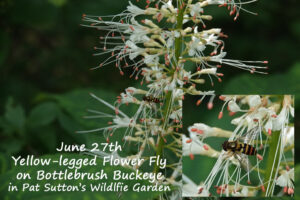




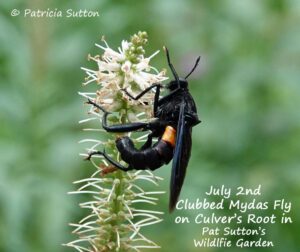

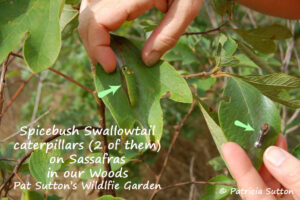
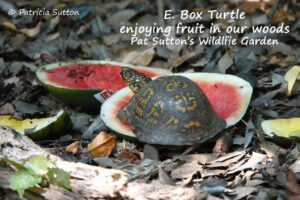









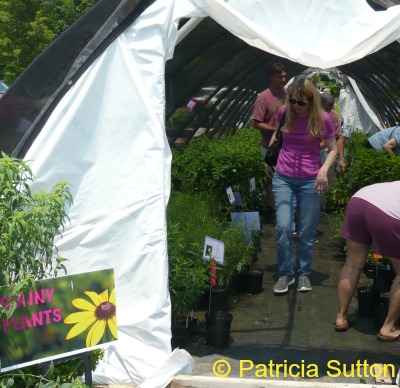



















 Many (1000s) have taken these workshops, been empowered, and created habitats that have given them pleasure for years to come.
Many (1000s) have taken these workshops, been empowered, and created habitats that have given them pleasure for years to come. Consider joining me for one, two, or all six of these workshops.
Consider joining me for one, two, or all six of these workshops.  So, what do you say! Will I see you in February & March?
So, what do you say! Will I see you in February & March? Time: 10:00 a.m. to 3:00 pm.
Time: 10:00 a.m. to 3:00 pm. Hi Gang,
Hi Gang, Sign up today and begin getting ready for the workshops. Draw a rough sketch of your yard, indicating structures (and hardscapes like driveways, decks, etc.), existing habitats (lawn, forest, lone trees, shrub islands, gardens, bird feeding station, brush pile, etc.), and mark NORTH, SOUTH, EAST, WEST on the sketch. Take time to note the sun’s path through your yard and where the sunniest areas are. Bring a wish list of the elements you want to add as well as the elements you need to work around.
Sign up today and begin getting ready for the workshops. Draw a rough sketch of your yard, indicating structures (and hardscapes like driveways, decks, etc.), existing habitats (lawn, forest, lone trees, shrub islands, gardens, bird feeding station, brush pile, etc.), and mark NORTH, SOUTH, EAST, WEST on the sketch. Take time to note the sun’s path through your yard and where the sunniest areas are. Bring a wish list of the elements you want to add as well as the elements you need to work around. Hi Gang,
Hi Gang,